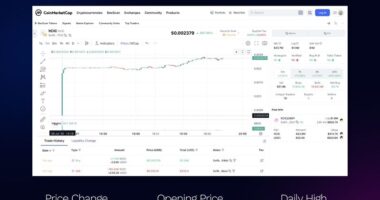Regional banking consolidation reached new heights as Fifth Third Bancorp announced plans to acquire Comerica in a deal valued at approximately $27 billion. The transaction represents one of the largest regional bank mergers in recent years and signals accelerating industry consolidation. Financial analysts at Fimatron examine how this mega-merger reshapes competitive dynamics and what it means for the future of regional banking.
Fifth Third will pay a 20% premium on Comerica’s 10-day volume-weighted average stock price as of October 3, representing $82.88 per Comerica share. The deal is expected to close by Q1 2026, pending regulatory approvals and shareholder consent.
Strategic Geographic Expansion
The merger dramatically expands Fifth Third’s geographic footprint beyond its traditional Midwest stronghold. More than half of the combined bank’s branches will be located in the Southeast, Texas, Arizona, and California by 2030, positioning the institution for growth in high-expansion markets.
Comerica’s strong presence in Texas, California, and Florida provides Fifth Third with immediate scale in regions experiencing population and economic growth. These markets offer better demographic trends than the Midwest rust belt, where Fifth Third historically concentrated its operations.
Many analysts note that this geographic diversification reduces exposure to regional economic downturns. When one region faces challenges, strength in other markets can offset weakness and stabilize overall performance.
Competitive Response Expected
Regional banks face pressure to achieve scale through mergers as technology costs rise and regulatory burdens increase. Smaller institutions struggle to invest adequately in digital banking capabilities that customers increasingly expect.
PNC, US Bancorp, and Truist may feel competitive pressure to pursue acquisitions that maintain their relative market positions. When one large regional consolidates, others often respond to avoid being left behind.
Community banks could become more attractive takeover targets as regional players seek to fill geographic gaps. Consolidation often cascades through the industry as banks at different size tiers combine.
Market Reaction and Valuation
The 20% premium Fifth Third is paying reflects confidence in Comerica’s franchise value and strategic fit. Premium levels indicate management’s belief that synergies will substantially exceed integration costs.
Investor response to merger announcements often depends on deal structure and strategic rationale clarity. Banks that clearly articulate value creation typically see more positive stock reactions than those pursuing scale for its own sake.
Credit rating implications will be monitored as agencies assess whether the combined entity maintains strong financial metrics. Any rating downgrades would increase funding costs and reduce merger benefits.
Wealth Management Opportunities
Combined wealth management assets will create one of the larger regional wealth platforms, providing scale to compete more effectively against national firms. Wealth advisory services generate stable fee income and deepen customer relationships.
Cross-selling opportunities emerge when commercial banking relationships can be leveraged to capture wealth management business from business owners and executives. Integrated service models create switching costs that improve retention.
Trust and estate services become more sophisticated and valuable at greater scale. High net worth clients seek comprehensive capabilities that smaller institutions struggle to provide profitably.
Interest Rate Environment Impact
Rising rate environment has helped bank profitability as net interest margins expanded from historic lows. However, recent Fed cuts introduce margin pressure that makes cost efficiency more important.
Deposit competition remains intense as customers become more rate-sensitive after years of near-zero returns. The combined institution must balance deposit costs against maintaining customer relationships.
Asset sensitivity of the merged balance sheet will determine performance as rates evolve. Banks positioned for different rate scenarios face varying impacts from Fed policy changes.
Regulatory Capital Optimization
Capital efficiency improves at scale as regulatory requirements are assessed against larger asset bases. The combined institution can support more lending and fee-generating activity with similar capital levels.
Stress testing requirements become more sophisticated for larger institutions but also provide clearer frameworks for capital planning. Knowing regulatory expectations helps optimize capital deployment.
TLAC and resolution planning may apply if the combined bank crosses systemic importance thresholds. These additional requirements increase complexity but provide public confidence in stability.
Industry Implications
Regional banking consolidation appears far from complete as institutions seek scale to compete against national giants and fintech disruptors. Expect continued merger activity across the sector.
Too-big-to-fail concerns may re-emerge if regional consolidation creates institutions whose failure would significantly impact the financial system. Regulators face difficult balancing acts between efficiency and systemic risk.
The community banking model faces increasing pressure as technological and regulatory costs rise. Very small institutions may struggle to remain independent absent niche specialization.
Strategic Outlook: Scale Matters More
The Fifth Third-Comerica merger reflects fundamental industry restructuring rather than opportunistic deal-making. Regional banks need scale to invest in technology, compete for talent, and satisfy regulatory requirements.
Successful execution will require disciplined integration management, clear customer communication, and maintaining credit quality during transition. The merger’s ultimate success depends on whether anticipated synergies materialize faster than integration challenges emerge.








